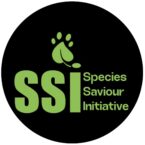Community Engagement & Environmental Education
At Species Saviour Initiative (SSI), we believe that real, lasting conservation begins with people. By raising awareness, educating communities, and empowering local leaders, we are creating a culture of stewardship that protects nature and its invaluable resources for future generations. We work to rebuild the deep connection between people and the environment that has been severed by years of conflict and isolation, especially in rural and remote areas of Puntland. Our programs bridge gaps, foster understanding, and inspire action.

Awareness & Environmental Education
In Puntland, the northeastern Federal Member State of Somalia, nearly 70% of the population lives in rural areas with limited public communication infrastructure. Most are illiterate and remain isolated from urban centers—and from the rest of the world. Although they live alongside endangered wildlife species, they are often not involved in conservation efforts. Reaching these communities with conventional media is challenging due to limited electricity and poor signal coverage. To address this gap, Species Saviour Initiative (SSI) employs innovative approaches to raise environmental awareness. We utilize mobile audiovisual technology—featuring a heavy-duty vehicle equipped with a portable screen, projector, and generator—to deliver environmental education directly to remote areas. Through public film screenings and guided discussions on biodiversity loss, climate change, deforestation, land degradation, and wildlife poaching, we engage local communities in meaningful dialogue. These events are designed not only to inform but also to inspire action and build an emotional connection to the natural world. By integrating cultural elements such as traditional poetry, we ensure that our messages deeply resonate with the audience. This approach has proven highly effective in overcoming barriers such as high illiteracy rates, limited infrastructure, and social taboos. The cyclical nature of these film tours also creates a valuable feedback loop, allowing us to refine our messaging and strengthen our engagement with each community we reach.

Volunteer & Youth Engagement
The next generation of conservation leaders is crucial to sustaining long-term change. At SSI, we actively engage youth and local volunteers in our programs, empowering them to become stewards of their environment. Through hands-on training, workshops, and involvement in local conservation projects, we provide the tools and knowledge necessary for young people to take charge of their communities’ environmental future. Our youth programs focus on cultivating leadership, fostering a sense of responsibility, and encouraging active participation in environmental protection. Volunteers play a critical role in spreading awareness, conducting grassroots campaigns, and supporting field conservation efforts. By mobilizing local talent and giving young people a platform, we are not only fostering a generation of informed conservationists but also ensuring that our efforts will be sustained for many years to come
